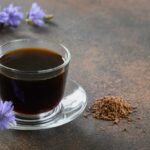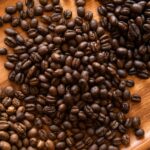Table of Contents
What is Siphon Coffee?
Siphon coffee, also known as vacuum coffee, is a visually captivating and unique brewing method that combines science and art to create a smooth, delicate cup of coffee. In this article, we will explore the history of siphon coffee, its distinctive characteristics, and how to brew it at home.
Here is a link to our Coffee Corner page!

History of Siphon Coffee
Origin
The siphon coffee maker was invented in the early 19th century by a Frenchman named Louis Gabet and later improved by Scottish engineer and inventor Robert Napier. The method gained popularity in Europe and the United States throughout the 19th and early 20th centuries.
Decline and Resurgence
Siphon coffee makers fell out of favor with the rise of more convenient and automated brewing methods. However, in recent years, there has been a resurgence of interest in siphon coffee, particularly among specialty coffee enthusiasts and professional baristas who appreciate its theatrical presentation and the unique flavors it can produce.
The Siphon Coffee Method Today
Distinctive Characteristics
Siphon coffee makers use a combination of vacuum and vapor pressure to brew coffee. The method produces a clean and delicate cup, highlighting the coffee’s subtle flavor nuances. Siphon coffee is also known for its smooth, velvety mouthfeel and visually striking brewing process.
Modern Siphon Coffee Makers
Contemporary siphon coffee makers come in a variety of designs, ranging from classic glass and metal models to sleek, modern versions with digital temperature control. Many coffee shops and specialty cafes now feature siphon coffee as part of their brewing repertoire.
Check out this beautiful Siphon Vacuum Coffee Maker!
How to Brew Siphon Coffee
Gather Ingredients and Equipment
To brew siphon coffee, you’ll need fresh coffee beans, clean water, a siphon coffee maker, a heat source (such as a butane burner or an electric hot plate), a grinder, and a thermometer.
Grind Coffee Beans
Grind your coffee beans to a medium-fine consistency, similar to the texture of sand. The grind size is crucial for proper extraction during the brewing process.
Assemble the Siphon Coffee Maker
Assemble your siphon coffee maker according to the manufacturer’s instructions. Fill the lower chamber with clean water, and attach the upper chamber using the provided filter.
Heat and Brew
Place the siphon coffee maker on the heat source and bring the water to a boil. The rising vapor pressure will force the hot water into the upper chamber, where it will mix with the coffee grounds. Stir the coffee and water mixture gently to ensure even extraction. Allow the coffee to brew for 1-2 minutes, then remove the heat source. As the lower chamber cools, the vacuum effect will draw the brewed coffee back through the filter and into the lower chamber.
Serve Siphon Coffee
Once the coffee has finished brewing and has returned to the lower chamber, carefully remove the upper chamber and pour the brewed coffee into cups or a serving carafe.
Tips for Perfect Siphon Coffee
Choose High-Quality Beans
Select fresh, high-quality coffee beans to ensure the best flavor. Experiment with different roast levels and origins to find the beans that suit your taste preferences.
Control the Temperature
Maintaining a consistent brewing temperature is crucial for siphon coffee. Aim for a brewing temperature between 195°F (90°C) and 205°F (96°C) for optimal extraction. Using a thermometer will help you monitor and maintain the ideal temperature throughout the brewing process.

Use a Consistent Heat Source
A steady heat source is essential for successful siphon coffee brewing. Butane burners and electric hot plates are popular choices, as they provide consistent heat and precise temperature control.
Clean Your Equipment
Keep your siphon coffee maker clean to ensure optimal brewing performance and flavor. Regularly clean the glass chambers, filter, and other components according to the manufacturer’s instructions.
Brewing? Science? Art?
Siphon coffee is a fascinating brewing method that combines science, art, and craftsmanship to produce a delicate, flavorful cup of coffee. With a bit of practice and attention to detail, you can master the siphon coffee technique and impress your friends and family with this captivating brewing method.
FAQs
What type of coffee beans should I use for siphon coffee?
Siphon coffee brewing highlights the delicate flavors and nuances of coffee, so it is best to use high-quality, freshly roasted coffee beans. Experiment with different bean varieties, origins, and roast levels to find your preferred flavor profile.
Can I make siphon coffee without a siphon coffee maker?
Siphon coffee brewing requires a specific coffee maker designed for this method. While it is not possible to recreate the exact process without a siphon coffee maker, you can experiment with other brewing methods, such as pour-over or French press, to create a similar flavor profile.
How long does it take to brew siphon coffee?
The total brewing time for siphon coffee can vary depending on the specific coffee maker and heat source used. Generally, siphon coffee takes around 5-10 minutes to brew, from heating the water to completing the brewing process.
How much caffeine does siphon coffee contain?
The caffeine content of siphon coffee can vary depending on the coffee beans used, grind size, and brewing time. Siphon coffee typically has a similar caffeine content to other brewing methods, such as pour-over or drip coffee.
Is siphon coffee suitable for beginners?
Siphon coffee brewing can be more complex and time-consuming compared to other brewing methods. However, with practice and attention to detail, even beginners can learn to brew delicious siphon coffee. It can be a rewarding and enjoyable experience for those who appreciate the science and artistry behind coffee brewing.
Check out other brewing methods here!
Daily Demitasse is a participant in the Amazon Services LLC Associates Program, an affiliate advertising program designed to provide a means for sites to earn advertising fees by advertising and linking to Amazon.com. We also participate in other affiliate programs which compensate us for referring traffic.














